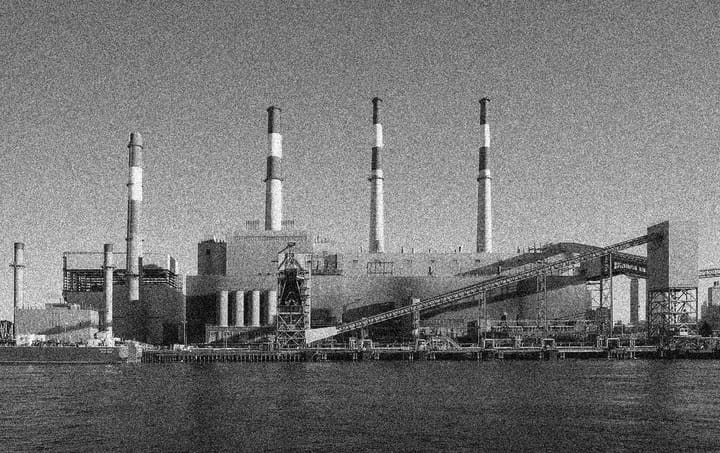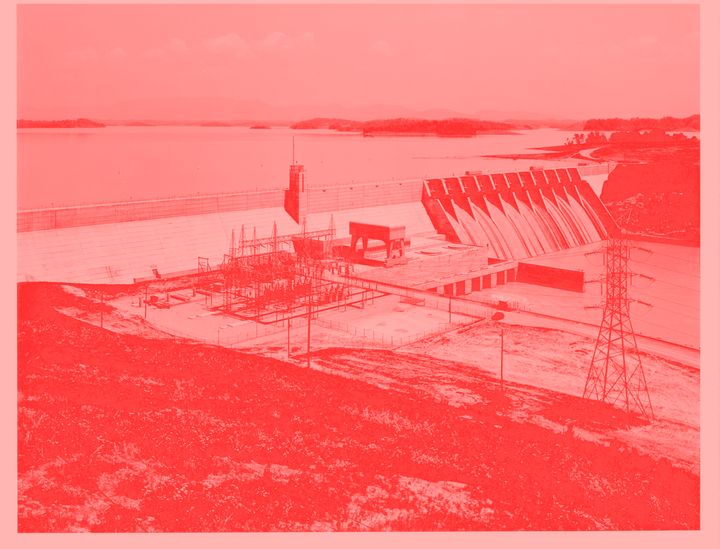Alexander Hamilton, Christian Parenti, and the Struggle for Life without Illusions
Christian Parenti’s new book is not just a call for dirigiste social transformation; it’s also a plea for a firm grounding in political reality.

Review of Christian Parenti, Radical Hamilton: Economic Lessons from a Misunderstood Founder (New York: Verso Books, 2020)
A recent Jacobin Talks episode featuring a debate between Leigh Phillips and Christian Parenti on the question of nuclear energy got surprisingly heated, and it’s not for the reasons one might expect. Phillips and Parenti agree on the needs for large-scale economic planning and to explore all technological possibilities, even carbon capture and sequestration, in fighting climate change. The traditional hard-nosed nuclear bro vs. 100% renewable, “small is beautiful” green dynamic is totally absent. So why the hostility?
There are lots of small quibbles here and there—for instance, on the safety of nuclear plants—but the primary point of disagreement between the two concerns the basic economics of the situation. Nuclear plants are extremely expensive to build: despite receiving massive subsidization from Bush II and Obama, only one new nuclear plant has actually been built in the last 20 years. As Parenti concludes in his presentation, the only way for nukes to be built out is if the costs are 100% socialized. Even with 85% subsidization by the federal government, the private sector doesn’t want to get involved, simply because there are other opportunities that are much more immediately profitable.
Phillips agrees that nuclear is expensive, but thinks the notion that the state couldn’t embark on a 100% subsidized nuclear build out gives in to the logic of austerity. Why precisely, as socialists, do we care about interest from the private sector? Why does it matter that wind and solar are cheaper in the market economy when it is the market economy that we want to change in the first place?
These questions are answered, rather directly for a work focused on early American history, by Parenti’s new book, Radical Hamilton: Economic Lessons from a Misunderstood Founder. The book tells the story of the founding of the United States as not-so-secretly driven by a dirigiste orientation, one built into the Constitution and personified in the controversial figure of Alexander Hamilton. For Parenti, Hamilton was a “homo publicus” (130)—authoritarian and repulsive in certain ways, but also someone whose life’s interests were so fused with those of the state as to be inseparable. Most people on the Left start out with a vaguely moral commitment and only hone a strategic, political orientation later. Parenti’s Hamilton works in reverse, starting with the strategic orientation and only getting to left-wing proposals out of sheer necessity.
Hamilton saw firsthand the dangers of political decentralization during and after the American revolution, especially the severe economic depression of the 1780s and the need for coordinated development of manufacturing prowess. Parenti sums up Hamilton’s vision for a developmentalist state “as follows: create a strong central state; use it to drive economic transformation and growth; tax that economic activity to fund the expansion and deepening of the state’s military and administrative capacities; and with these powers harness the national territory’s biophysical natural endowments of human labor power, the work energy of nature, and the organic properties of the soil, sediment, and rock” (137). This vision received its most mature expression in The Report on the Subject of Manufactures from 1791, which Parenti calls “the unacknowledged text of dirigiste developmentalism” (174). In this report, Hamilton lays out “the means proper,” the essentials of the dirigiste toolbox, including “protective tariffs, import bans, producer subsidies, export bans on raw materials, import liberalization for strategic industrial inputs, prizes and patents for science and technological inventions, government regulation and inspection of product standards, development of transportation infrastructure, and a central bank” (175).
The lesson here for the present doesn’t require much imagination. In the face of continued economic decline and the disaster of climate change, the United States once again needs a dramatic exercise of the means proper, and to do that, “we could do worse than consulting the templates from our own history” (237). The catastrophic War of 1812, when the British ran roughshod over a fractured American military and Admiral George Cockburn burned the White House, serves as a clear illustration of what we can expect without the boldness and coordination of dirigiste developmentalism.
If the lesson of this history for the era of climate change is unclear, in your mind’s eye replace the “Mongolian vengeance” of the young Admiral Cockburn, the flames illuminating his manic laughter, with ferocious tree-toppling winds, surging street-flooding tides, floating cars, and a government response in chaotic default and ruin. Then imagine the next day, sweltering hot, sodden, soggy, and starting to stink of rotting garbage and the occasional corpse (213).
But the need for strong state planning is not the only lesson here. Just as important for Parenti is an orientation to that planning grounded in scientific and political reality, not in ideological dogma. Parenti even invokes Lenin in “Left-Wing” Communism to ventriloquize Hamilton: mistaking one’s own “‘political ideological attitude for objective reality’” makes one prone to the kind of strategic miscalculation that “‘is the most dangerous mistake for revolutionaries’” (138). Radicals seeking broad economic transformation don’t get do-overs. Their policies must work, and they must work given existing political-economic reality.
Amongst other things, this implies a particular orientation to the private sector: rather than always fight private interests directly, Hamilton saw it as better to “harness the rich to the larger political project” (161): “[h]is goal was to neither smash nor coddle the ‘monied men’ but rather to harness that class to the political project of state building” (66). This attitude might instantly repel those on the socialist Left, but Parenti thinks there is a valuable lesson here: short of achieving a full socialist society, we have to take into account the tendencies of the market and the interests of the profiteers. Sometimes this will mean we have to ruthlessly vilify and attack them, as with the private insurance industry today. But sometimes it will mean placating one part of capital to play it off the other, or subsidizing the private sector as a means of accelerating a particular transformation. The ruling class is undoubtedly the enemy, but it’s a powerful enemy against which thinking radicals must be willing to use a wide variety of tactics and the full range of the means proper.
With all of this in mind, perhaps the easiest way to resolve the debate between Phillips and Parenti on the question of nuclear power is simply to ask: imagine you had one piece of energy legislation to get the Left behind. Would that bill fund/subsidize the construction of large solar arrays and offshore wind with project labor agreements, or would it build out totally state-sponsored nuclear? This is not a question about how you decarbonize in general, it’s one about what the right demand for the Left is at the current political conjuncture. Nuclear could be much safer, more reliable, and cleaner than detractors allow, while still coming in a decided second in this question of political prioritization. I won’t try to settle that question here, but these are the terms on which it ought to be decided.
Radical Hamilton bears a curious epigraph: two passages from Sigmund Freud’s Civilization and its Discontents. The last ends with the famous line: “the evolution of civilization may therefore be simply described as the struggle for life of the human species.”
As everyone is painfully aware, the Left’s current class composition is not particularly promising, and practically that means it is and will continue to be dominated by a lot of immaterial concerns and errant fantasizing. Radical Hamilton is a call to get realistic—not neoliberal or subservient to the logic of austerity, but realistic given existing political constraints and dynamics. This realism must be based in “the struggle for life of the human species”—not the faux urgency of radical environmentalists or techno-futurist visions of abundance, but concrete plans for making life better and more secure for people that are properly attuned to what is possible now, which, for all his faults, was what Alexander Hamilton prioritized above all else.
In this, Freud’s other major “cultural” work of the period, The Future of an Illusion, applies as well. For Freud, an illusion is not a delusion—illusions can sometimes be true. Illusions are rather wish-fulfillments; they are based in what we want, not what is. Like Hamilton and Freud, Parenti wants us to engage with the existing world without such illusions. At our own critical period in American history, the continued struggle for life depends on it.
■
Benjamin Y. Fong is an Arizona-based teacher and writer.



